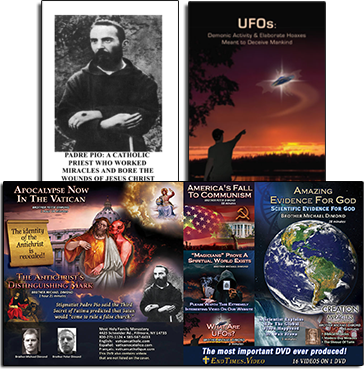November 20, 2004Where does it mention the rosary in the Bible?
Thank you.
Donna H.
Besides the meditations on the mysteries of Christ and Our Lady (all of which are indicated in Scripture), the Rosary is comprised essentially of two prayers, the Our Father and the Hail Mary. Both come from the Bible. The Our Father is given to us by Our Lord in Scripture (Matthew 6; Luke 11), and the main part of the Hail Mary is found in Luke Chapter 1. The Hail Mary is as follows: HAIL MARY FULL OF GRACE, THE LORD IS WITH THEE, BLESSED ART THOU AMONG WOMEN AND BLESSED IS THE FRUIT OF THY WOMB JESUS, HOLY MARY MOTHER OF GOD PRAY FOR US SINNERS NOW AND AT THE HOUR OF OUR DEATH.
“Hail [Mary], full of grace, the Lord is with thee, Blessed art thou among women” comes directly from Luke 1:28.
“Blessed art thou among women and Blessed is the fruit of thy womb [Jesus]” comes directly from Luke 1:42.
“Holy Mary Mother of God pray for us sinners now and at the hour of our death” is not found in Scripture, but completes the above prayer with a sublime petition to the Mother of God.
Protestants fail to understand the significance of Mary because they don’t understand Jesus. They fail to understand the significance of the following truth about Jesus.
Pope St. Leo the Great, Council of Chalcedon, 451, ex cathedra: “… our Lord Jesus Christ… indeed born of the Father before all ages according to His Divinity, but in the last days born of the Virgin Mary, Mother of God, according to His humanity; for us and for our salvation, one and the same Christ…”
One may say, what is Mary doing in a discussion of this magnitude?
Therein lies her dignity, her power with God, and why God wishes us to have devotion to her. Catholics perceive and say “wow” at Mary’s role in the above, while Protestants remain blind to it and often attack it. They fail to understand how her soul “doth magnify the Lord” (Luke 1:47) because they don’t understand who she is who gives birth to the Son of God in His humanity. They fail to perceive the ramifications of this inscrutable truth.
The Hail Mary, which begins in Luke 1:28 (the Angelic Salutation), is so significant precisely because it represents the Incarnation – the act by which the Son of God became man. As St. Louis De Montfort puts it, the Angelic Salutation (the Hail Mary) “has saved the world,” because by it (God becoming man in Mary’s womb) man had a chance to be saved.
“Blessed Alan De la Roche who was so deeply devoted to the Blessed Virgin had many revelations from her and we know that he confirmed the truth of these revelations by a solemn oath. Three of them stand out with special emphasis: the first, that if people fail to say the Hail Mary (the Angelic Salutation which has saved the world) out of carelessness, or because they are lukewarm, or because they hate it, this is a sign that they will probably and indeed shortly be condemned to eternal punishment. The second truth is that those who love this divine salutation bear the very special stamp of predestination. The third is that those to whom God has given the signal grace of loving Our Lady and of serving her out of love must take very great care to continue to love and serve her until the time when she shall have had them placed in heaven by her divine Son in the degree of glory which they have earned.” (The Secret of the Rosary, p. 45.)
The Hail Mary, and Catholics’ petitions throughout history to the Mother of God, are prophesied by Our Lady herself in
Luke 1:48: “…for behold from henceforth all generations shall call me blessed.”
The Catholic commentary on this verse puts it well:
“These words [Luke 1:48] are a prediction of that honor which the Church in all ages should pay to the Blessed Virgin. Let Protestants examine whether they are in any way concerned in this prophecy.” (Challoner)
November 13, 2004Where does it mention the rosary in the Bible?
Thank you.
Donna H.
Yes, we are familiar with them. Unfortunately, they do not hold the dogma Outside the Church There is No Salvation, but agree with the SSPX that souls can be saved without baptism and in false religions. They also hold that John Paul II is the Pope. They are basically an SSPX Monastery. Certain SSPX priests go from the SSPX into the Monastery and then back into the SSPX, although they would “officially” claim that the Monastery is not strictly affiliated with the SSPX. I also believe that Bishop Williamson has gone there to perform ordinations, although I’m not 100% certain about this. Thus, their positions would be in line with the SSPX.
November 10, 2004Where does it mention the rosary in the Bible?
Thank you.
Donna H.
Celso, We addressed that issue in the Heresy of the Week from 5/28/04. You will find it in the Heresy of the Week Archive on our website.
November 7, 2004Where does it mention the rosary in the Bible?
Thank you.
Donna H.
Pat: I looked at his website. Fr. Wingate is a complete heretic who believes that Catholics should unite with the schismatic "orthodox" sects. Thus, he promotes schism and the denial of the Catholic Faith. He even promotes that these schismatics have true visionaries. He also believes that John Paul II is the Pope and that John Paul II is on the side of God. This alone proves that Wingate and his “messages” are not of God, but of the devil; for he denies the defined Catholic Faith. He also promotes the totally false and wicked "revelations" of Fr. Gobbi, who thinks that John Paul II is "Mary's Pope." Nothing could be further from the truth or more clearly from Satan - as one look at the photo galleries on our website shows.
Thus, Fr. Wingate gives himself away as a tool of Satan. Wingate is probably having visions and, who knows, maybe he does bilocate, but these visions, bilocations and false miracles are given to him by Satan in order to promote him as a false prophet to deceive people and keep them inside the phony Vatican II sect. These are the false signs and wonders spoken of in 2 Thess. 2 that accompany the reign of Antichrist. In various places in the world today there are things happening with other Novus Ordo false prophets which are similar to the things that Fr. Wingate claims are happening to him.
November 4, 2004Where does it mention the rosary in the Bible?
Thank you.
Donna H.
Yes, we’ve sent Williamson materials in the past, which he rejected. He is adamantly opposed to the true meaning of Outside the Church There is No Salvation. He is not reasonable, especially when one considers what he believes on the core issues of the day. His declaration that he rejects John Paul II’s “Canonizations” even though he regards him as the Pope (a declaration which is quoted in our article “the Heresies of the SSPX”) reveals him to possess absolutely no Faith in the Papacy whatsoever.
November 1, 2004Where does it mention the rosary in the Bible?
Thank you.
Donna H.
It is possible for a person who has been baptized, and believes in the essential mysteries of the Catholic Faith, to be saved without having set foot in a Catholic church. For instance, some of the heathen whom St. Isaac Jogues converted were instructed in the essential mysteries of the Catholic Faith (the Trinity and the Incarnation) and were baptized just before they were tortured and killed. They were Catholics even though they never set foot in a Catholic church.
In order to be a Catholic and a member of the Church, one must at least be baptized and, if above reason, know at least the essential mysteries of the Catholic Faith (the Trinity and the Incarnation) – and not reject any teaching of the Church. Persons such as those described above (baptized just before death by St. Isaac Jogues) are also subject to the Roman Pontiff, just like infants, by virtue of their baptism.
Such persons would not be exceptions to the dogma at all, since those persons are Catholics and are within the bosom and unity of the Church; they are also part of the visible Church, by virtue of their baptism and acceptance of the essential mysteries of Catholicism.

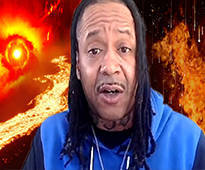
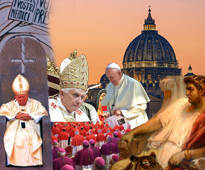
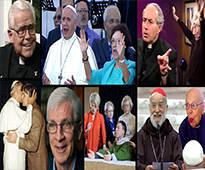
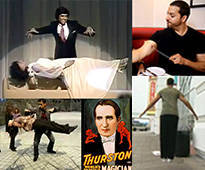
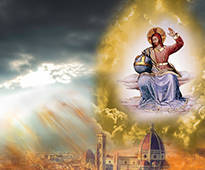

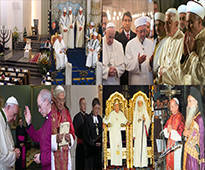
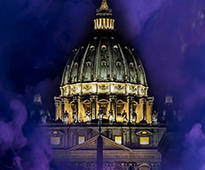

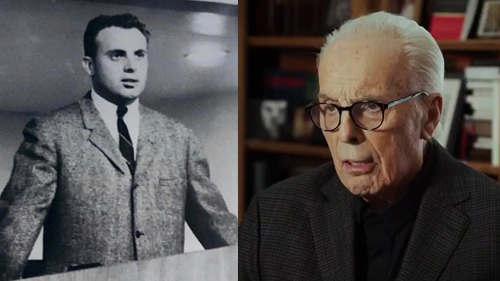 " />
" />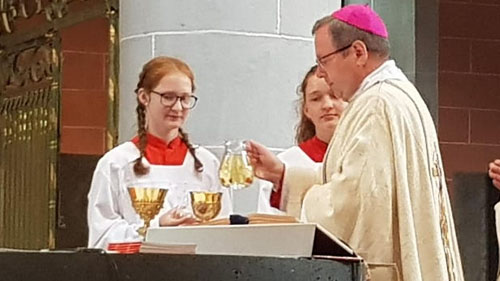 " />
" />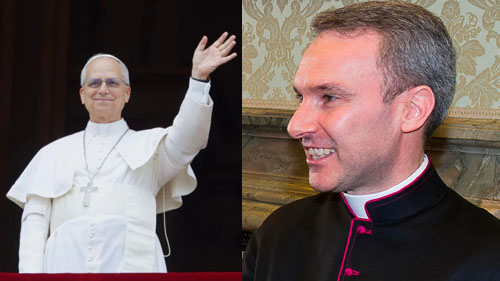 " />
" />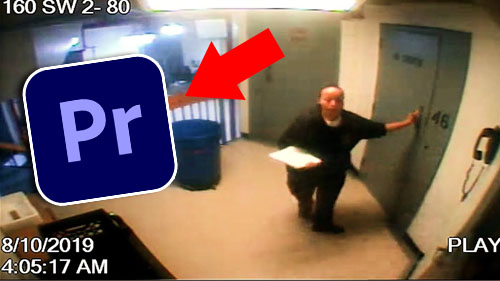 " />
" /> " />
" />




